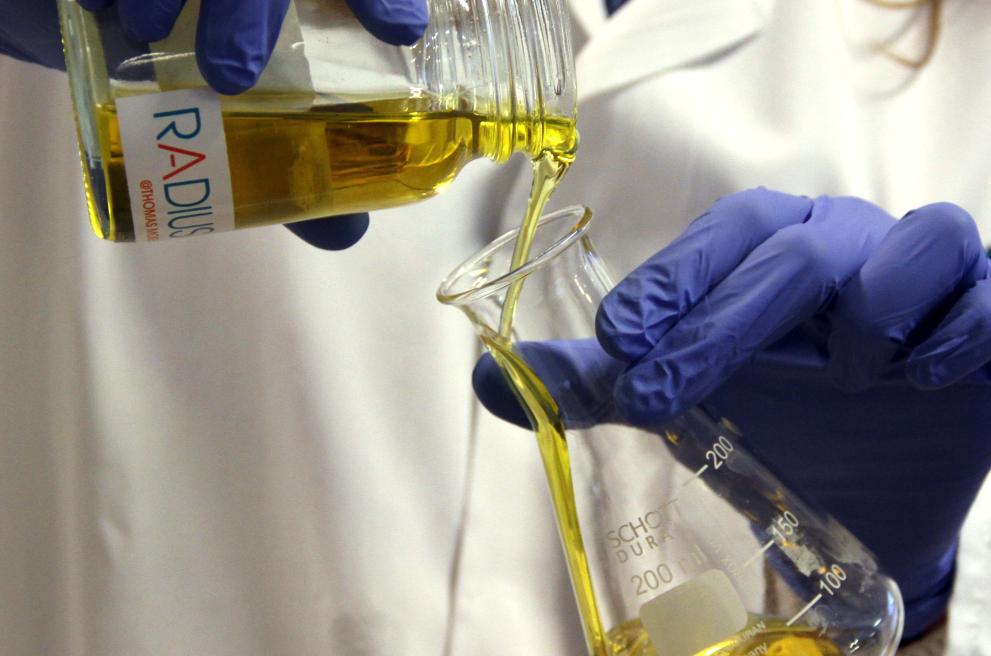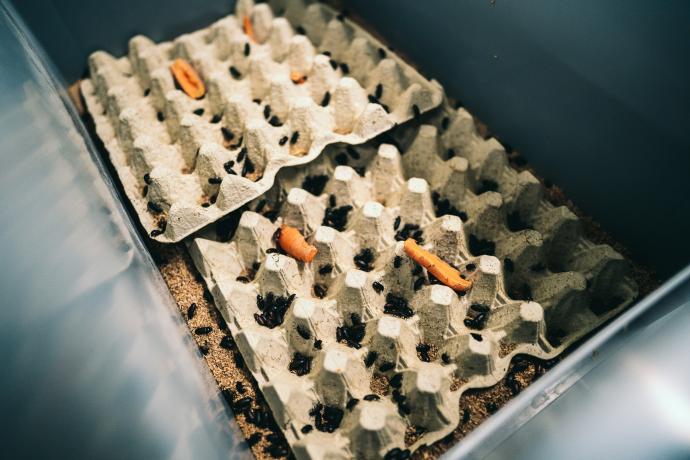

Yellow mealworms have been produced for quite some time now, mainly as feed for hobby animals such as birds and reptiles. More recently, research has proven the potential of this insect species as an alternative protein source in food and feed applications. The popularity of this insect has since then led to knowledge and insights regarding its production and processing.
Mealworms (Tenebrio molitor) are the larvae of the yellow mealworm beetle, a black beetle with an average size of 1 to 2 cm. This insect belongs to the family of darkling beetles (Tenebrionidae) and is globally distributed.
Originally, this insect was considered a pest, as their natural feeding habits consist of consuming cereal products in dark storage areas. They also feed on vegetables, fruits and animal products. In the West, this insect has long been reared as feed for hobby animals, for example, reptiles and insect-eating birds. Meanwhile, their potential in food and feed applications also became known. This led to the approval of a Novel Food Dossier in the European Union (Regulation No. 2015/2283). Specifically, this means that dried and frozen mealworms as well as processed into meal may be sold as food on the European market.
The yellow mealworm is a holometabolic insect species, meaning it undergoes 3 transformations before reaching the adult stage: from egg to larva, from larva to pupa and from pupa to adult beetle. After about 4 days in the adult stage, the beetles are fertile and start laying eggs. Those eggs will hatch after approximately 8 days. A yellow mealworm beetle lays on average 200 to 300 eggs during her lifetime. Those eggs are laid both in clusters and separately, but they are always attached to something: ideally, a possible food source for the offspring. Consequently, the eggshell consists of a sticky substance. After 4 weeks of age, the beetles' reproductive capacity declines.

The production phase (from egg to full-grown larva) takes on average 10 weeks. However, this depends on environmental conditions and feed (range 8 to 12 weeks). None of the life stages of this insect is dependent on light. The beetles have the ability to fly, but rarely do so. Consequently, they can be kept in open crates. However, keep in mind that the yellow mealworm is a cannibalistic insect: the mobile stages such as beetles and larvae can damage the immobile stages, i. e. pupae and eggs. For this reason, it is recommended to house the different life stages separately, in separate breeding crates. Typically, mealworms are reared on grain by-products (e.g. wheat bran) and a moisture source (e.g. carrots or other vegetables). Mealworms reared in conditions of 27 °C and 60% relative humidity using wheat bran and carrots as feed, can achieve below presented results.

dry matter/live weight
total larval yield (live weight) per 40x60 cm rearing crate
dry matter basis
She now maintains the insect colonies in the Insect Pilot Plant and assists in research regarding insect optimisation and the use of by-products as insects feed.
Ann onderhoudt de insectenkweek in de Insect Pilot Plant en helpt mee in het onderzoek naar productie-optimalisatie en het gebruik van nevenstromen in het teeltproces.